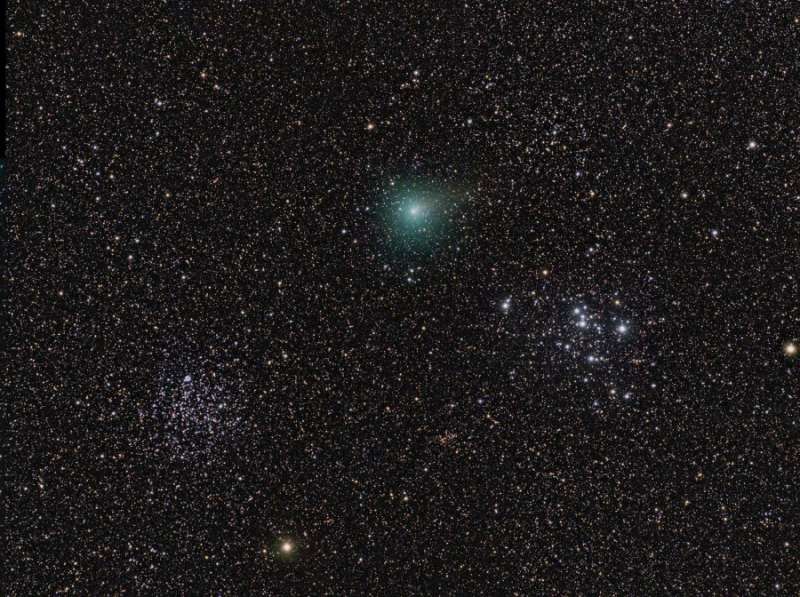Credit & Copyright: Rolando Ligustri
(CARA Project,
CAST)
Explanation:
Early last November, small but active Comet Hartley 2
(103/P Hartley) became the
fifth comet
imaged close-up by a
spacecraft
from planet Earth.
Still cruising
through
the solar system with a 6 year
orbital period, Hartley 2 is is making
astronomical headlines again, though.
New
Herschel
Space Observatory measurements indicate that the water
found in this comet's thin atmosphere or coma has the same ratio
of the hydrogen
isotope
deuterium (in heavy water)
as the oceans of our fair planet.
Hartley 2 originated in the
distant Kuiper Belt,
a region beyond the orbit of Neptune that is a reservoir
of icy cometary bodies and dwarf planets.
Since the ratio of deuterium is related to the solar system
environment where the comet formed, the Herschel results
indicate that Kuiper Belt comets could have
contributed substantial amounts of water to Earth's oceans.
Comet Hartley 2 appears in
this starry skyscape from last November
sporting a tantalizing greenish coma appropriately sailing through the
nautical
constellation Puppis.
Below the comet are open star clusters M47 (right) and
M46 (left).
1999 2000 2001 2002 2003 2004 2005 2006 2007 2008 2009 2010 2011 2012 2013 2014 2015 2016 2017 2018 2019 2020 2021 2022 2023 2024 2025 |
Yanvar' Fevral' Mart Aprel' Mai Iyun' Iyul' Avgust Sentyabr' Oktyabr' Noyabr' Dekabr' |
NASA Web Site Statements, Warnings, and Disclaimers
NASA Official: Jay Norris. Specific rights apply.
A service of: LHEA at NASA / GSFC
& Michigan Tech. U.
|
Publikacii s klyuchevymi slovami:
comet - M 46 - Puppis - water - komety - Korma
Publikacii so slovami: comet - M 46 - Puppis - water - komety - Korma | |
Sm. takzhe:
Vse publikacii na tu zhe temu >> | |
